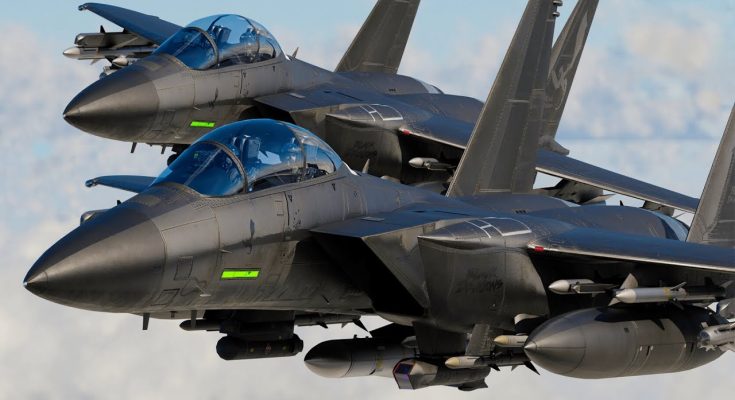The F-15EX Eagle II, the newest iteration of the iconic F-15 fighter jet developed by Boeing, is causing a stir in global military circles due to its combination of advanced capabilities, upgraded technologies, and enhanced operational flexibility. A successor to the F-15C/D, the F-15EX is seen as a powerful addition to the U.S. Air Force’s arsenal, providing a potent mix of speed, agility, and combat power. Its advanced features and capabilities have made it a feared weapon around the world, not just because of its technological edge, but also due to its strategic significance in modern warfare.
One of the primary reasons the F-15EX is feared by adversaries is its sheer firepower and versatility. Designed to carry a vast array of weapons, including both air-to-air and air-to-ground munitions, the F-15EX can engage a wide range of targets, from enemy fighter jets to surface-based threats. It boasts an increased payload capacity compared to its predecessors, capable of carrying more than 20,000 pounds of weapons, making it one of the most heavily armed fighters in its class. This flexibility makes the F-15EX an effective platform for both tactical and strategic missions, capable of adapting to a variety of combat scenarios.
The aircraft is also equipped with advanced avionics and cutting-edge sensor systems, elevating its situational awareness. The F-15EX features the latest in radar technology, including the AN/APG-82(V)1 AESA (Active Electronically Scanned Array) radar, which offers superior tracking, targeting, and jamming capabilities. This radar system allows the F-15EX to detect and engage multiple targets at long ranges, providing it with a tactical advantage over older aircraft. Additionally, the jet’s enhanced electronic warfare (EW) suite helps protect it from enemy radar and missile systems, making it harder for adversaries to lock onto the jet or disrupt its operations.
Another key factor in the F-15EX’s growing reputation is its ability to integrate seamlessly with the latest generation of U.S. and allied military technologies. It is designed with an open systems architecture, meaning it can easily adapt to future upgrades, software, and new weapons systems. This modular approach ensures that the F-15EX can remain at the cutting edge of aerial combat for decades to come, a crucial feature in an era of rapidly advancing military technology.
The F-15EX’s advanced capabilities are complemented by its proven reliability and combat record. Unlike many newer fighter platforms, the F-15 series has a decades-long history of operational success, with numerous variants having seen extensive service across various air forces worldwide. The F-15EX builds upon this legacy, offering the same ruggedness and adaptability that made its predecessors so effective in combat. This combination of advanced technology and operational experience makes it a trusted and formidable asset for the U.S. and its allies.
Additionally, the F-15EX’s ability to operate alongside other modern fighter jets, such as the F-35 and F-22, enhances its deterrence value. Its interoperability allows it to function as part of a larger, integrated air combat network, supporting joint missions and ensuring that it can complement and enhance the capabilities of other aircraft.
The international fear of the F-15EX stems from these combined advantages—its unmatched firepower, cutting-edge technology, operational flexibility, and integration with allied forces. As potential adversaries face the prospect of encountering an upgraded, highly versatile F-15EX in the skies, it sends a clear message about U.S. military superiority. This formidable jet has not only cemented its place as a top-tier air superiority fighter but has also underscored the growing technological gap between the U.S. and potential rivals, further solidifying America’s position as a dominant force in global aerospace and defense.



